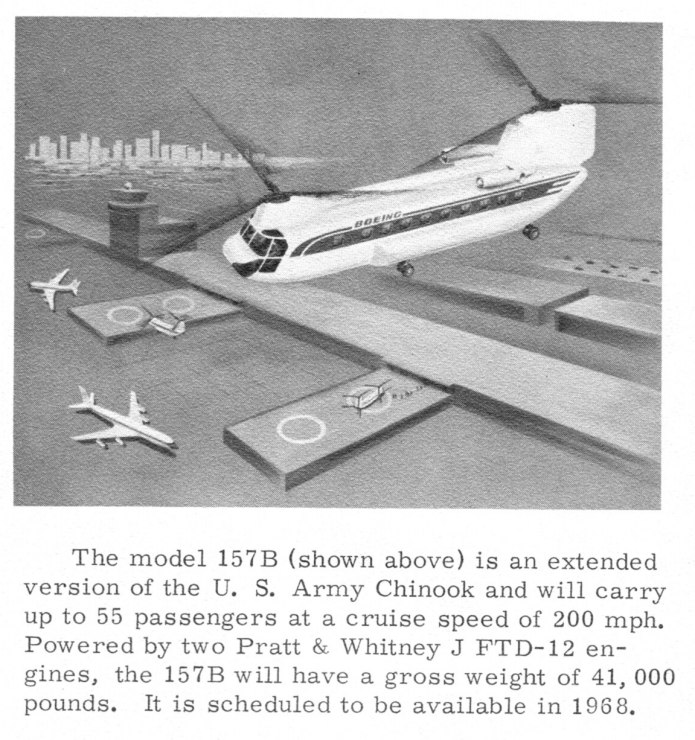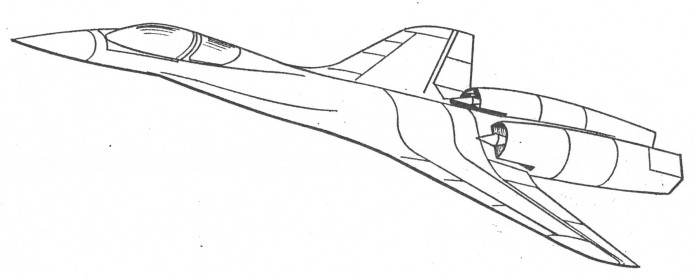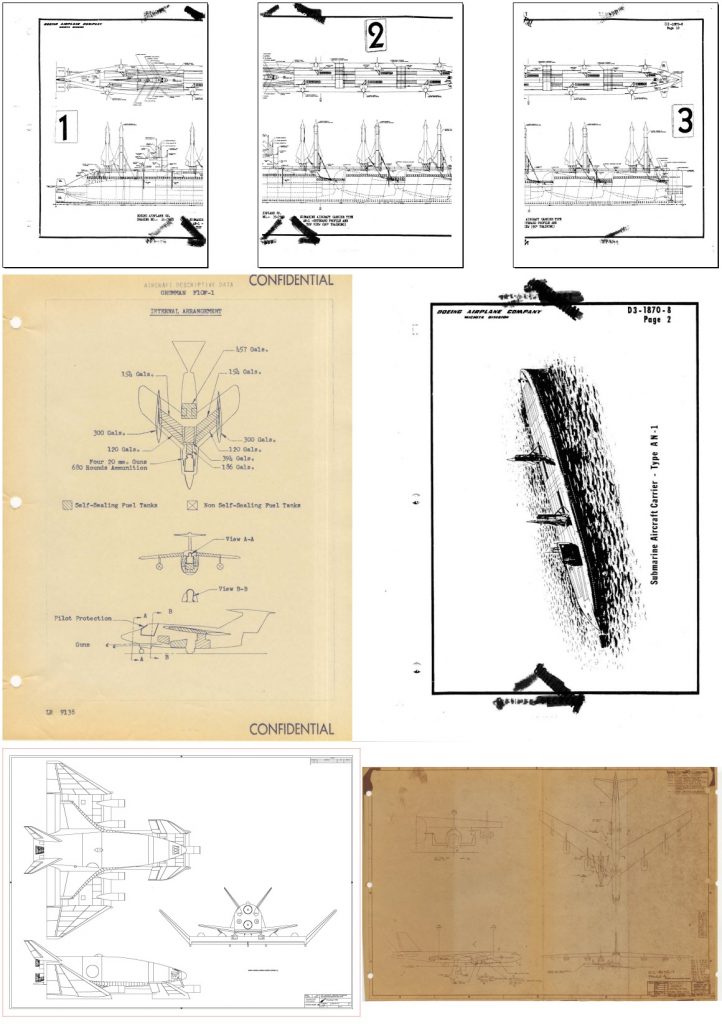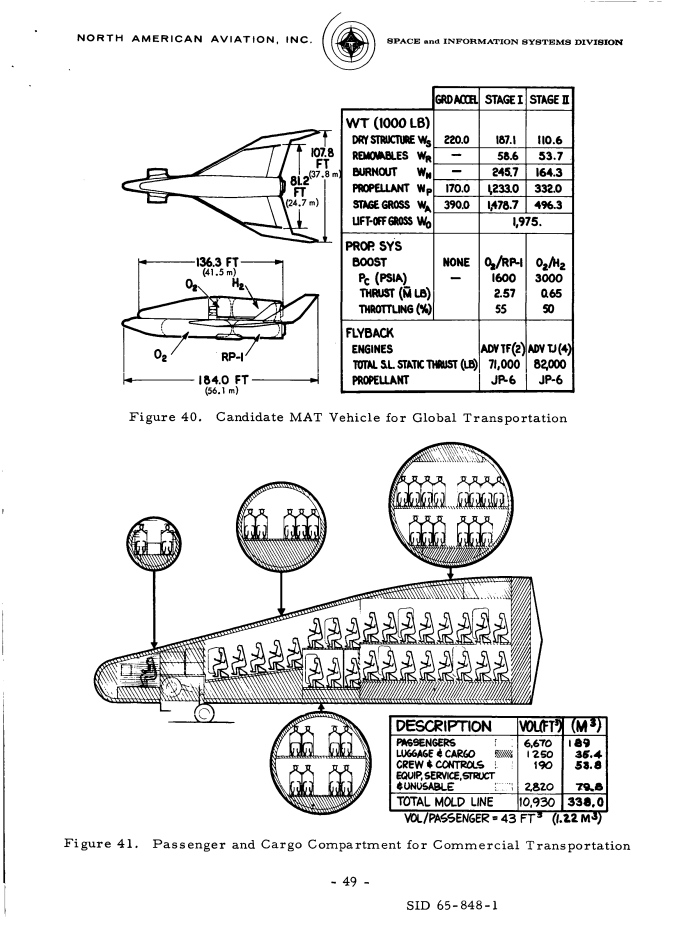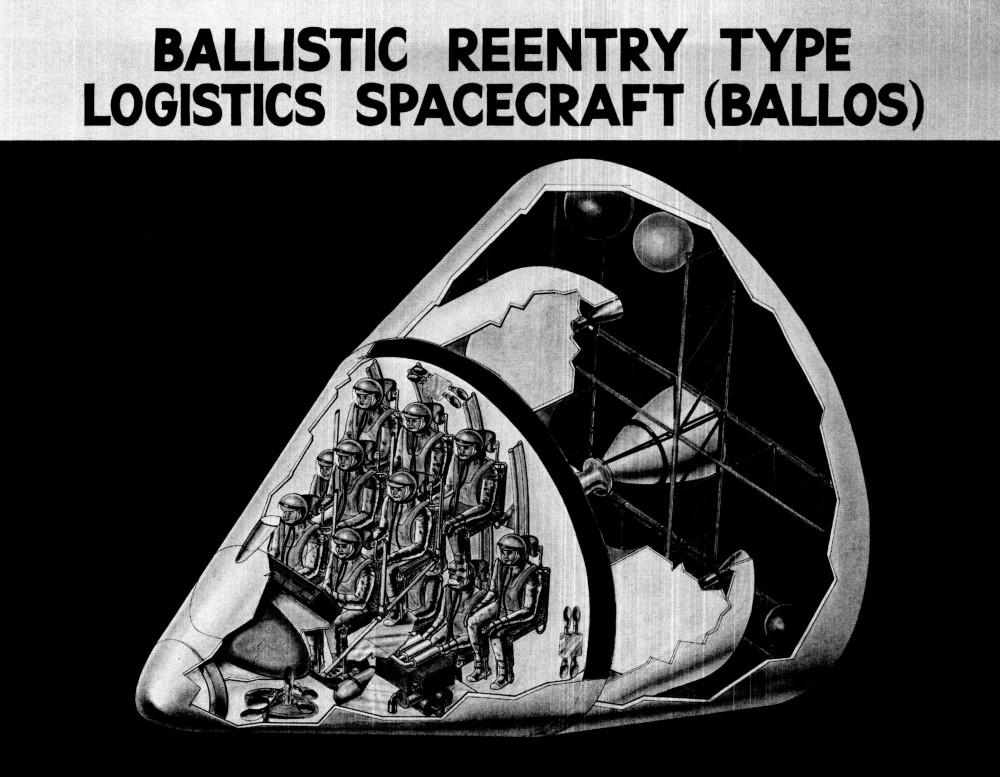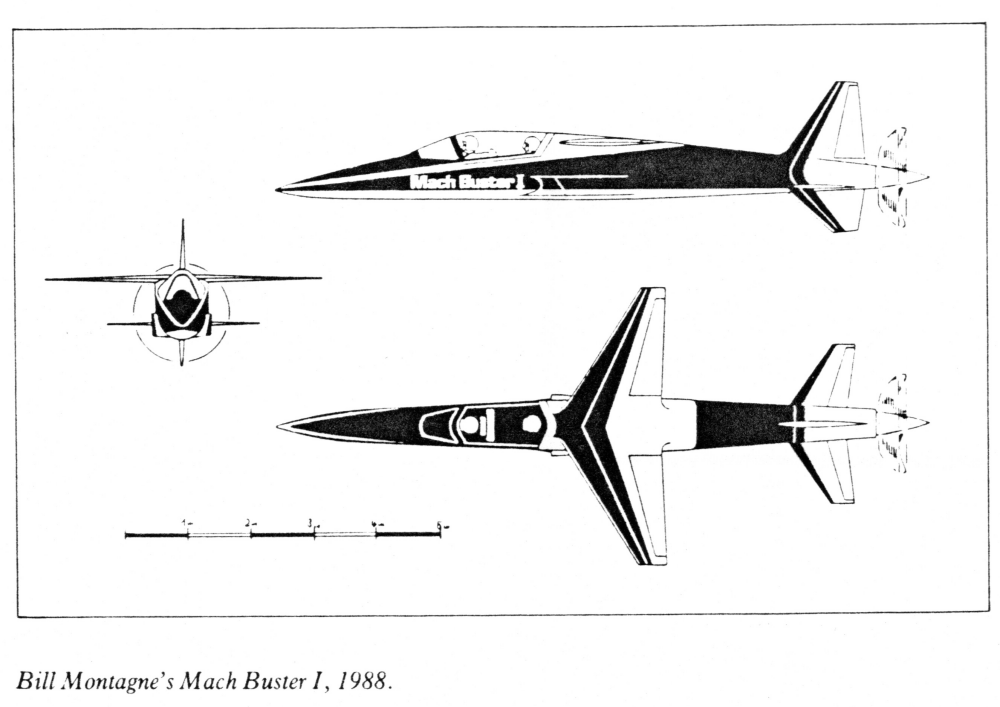A 1966 Boeing concept for a civilian version of the Chinook. Viet Nam veterans I’ve known who rode in Chinooks of that era have stories that make me suspect that *substantial* structural stiffening would have been required for such a craft to be fully accepted by the public; apparently, looking forward towards the cockpit and watching the while cabin twist back and forth was slightly disconcerting. A cruise speed of 200 mph seems slightly optimistic.
Found on the Flickr account of the San Diego Air & Space Museum is this bit of concept art:

The description: “Flaunt Fleet Air Ultra Naval transport sitting 25 above waves on rsbs retractable spar buoy stabilizer concept and design by Thomas P. Faulconer artist Joe Ferrara date 1985 includes plaque and article by designer on back”
This came from an article published in the April 1985 issue of the US Naval Institute Proceedings by Thomas Faulconer, an article I don;t have. So… there ya go.
If you’ve got It, FLAUNT (fleet air ultra naval transport) It. Thomas P.Faulconer. tab lllus US Nav Inst Proc 111:135-139 Apr »85
Protected: APR: May 2020 catalogs
There have been a lot of “personal air vehicles” designed over the last decade, most designed for VTOL operations and many with purely electric propulsion systems. One such design – which I can’t vouch for on either technical or financial fronts – is the Delorean DR-7 from Delorean Aerospace, founded by the nephew of *that* Delorean.
Their website, lean on details:
http://www.deloreanaerospace.com/
An article from 2017:
A Flying Car From DeLorean Really Won’t Need Roads
And a patent (US9862486B2):
Vertical takeoff and landing aircraft

I’m terrible at posting updates on the latest rewards, but I do get every rewards package out on time. That said, APR Patrons and Monthly Historical Documents Program subscribers have just been sent the rewards for April, 202. This package includes:
1) “Flying Carpet Feasibility Study Submarine Carrier,” a full scan of the 1958 Boeing report on a series of submarines design to carrying Mach3+ VTOL strike fighters
2) “F10F Descriptive Data,” a full scan of a 1953 Lockheed document describing this competitors design
3) Diagram 35-17610, B-52 airdrop carrier aircraft for the Model 844-2050 X-20 Dyna Soar
4) A CAD diagram of a two-stage Rockwell Trans Atmospheric Vehicle using a ground effect machine first stage
If this sort of thing is of interest and you’d like to get in on it and make sure you don’t miss any of the forthcoming releases, sign up either for the APR Patreon or the APR Monthly Historical Documents Program.
All prior “back issues” are available for purchase by subscribers.
Protected: April 2020 catalogs
In 1965 North American Aviation produced a study for NASA about reusable space launch vehicles to support forthcoming expected space stations. Included within that study was an alternate use of rocket vehicles… point-to-point hypersonic commercial passenger transportation. This concept goes back to the late 1940’s and has continued to the present day, with the Elon Musk suggesting that the SpaceX Starship could be used for that purpose. The idea is interesting and it certainly *could* work. But could it be commercially cost effective? History with craft such as the Concorde and the Shuttle argue strongly against an early vehicle like this doing anything but losing truckloads of cash every time it launches.
Artwork circa 1964 depicting the Lockheed BALlistic LOgistics Spacecraft (BALLOS), a sort of super-sized Apollo capsule meant for the transportation of a dozen astronauts (10 passengers, 2 crew) at once to and from any one of the doubtless dozens of space stations that the United States would surely have in orbit by the mid 1970’s. Launch vehicle would be a Saturn Ib.
The “Mach Buster” was an unfinished amateur-built prop plane that was optimistically planned (in the late 1980’s) to exceed the speed of sound. Sadly, I’ve long since lost the reference for where the below image came from, existing in my collection solely as a single photocopy.
A brief article on the Mach Buster was in the August, 1989, issue of Popular Mechanics.
